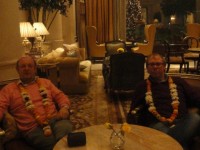
Bijapur
The foundation of this historic city was laid during the reign of the Chalukyan dynasty of Kalyani between the 10th and 11th centuries. They called it VIJAYAPURA or the City of Victory. Vijayapura experienced a great burst of architectural activity under the Adil Shahi dynasty. The Adil Shahis encouraged building activity to such an extent that Vijayapura itself has over 50 mosques, more than 20 tombs and a number of palaces. Vijayapura is mainly famous for Gol-Gumbaz, Jumma Masjid, Bara Kamaan, Gajanan Temple, Ibrahim Rauza,Taj Bawdi, Mallike-e Maidan, Methar Mahal, Gagan Mahal, Jala Manzil, Upli Buruj, Shivagiri, Siddeshwar Temple etc.
The city consists of three distinct portions: the citadel, the fort and the remains of the city. The citadel, built by the Adilshahi Sultans, a mile in circuit, is of great strength, well built of the most massive materials, and encompassed by a ditch 100 yards (91 m) wide, formerly supplied with water.The fort, which was completed by the Adilshahi Sultans in 1566, is surrounded by a wall 6 m. in circumference. This wall is from 30 to 50 ft (15 m) high, and is strengthened with ninety-six massive bastions of various designs. In addition there are ten others at the various gateways. The width is about 25 ft (7.6 m); from bastion to bastion runs a battlement curtained wall about 10 ft (3.0 m) high. The whole is surrounded by a deep moat 30 to 40 ft (12 m) broad. Inside these walls the Bijapur kings bade defiance to all comers. Outside the walls are the remains of a vast city, now for the most part in ruins, but the innumerable tombs, mosques, which have resisted the havoc of time, afford abundant evidence of the ancient.
Connectivity
By Flight
The nearest airport is Belgaum (205 km), which is well connected to Mumbai and Bangalore.
By Rail
You can get to Bijapur easily as the railway line connecting Solapur in Maharastra and Hubli passes through the center of the district, via Indi and Basavan Bagewadi. Bijapur is well connected to Bangalore, Mumbai (via Solapur), Hyderabad (via Solapur), Hospet (via Gadag), Vasco da Gama (via Hubli and Londa). Bijapur railway station comes under the administrative control of HUBLI division of South Central Railway (SCR).
By Road
Bijapur is connected by road to most places in south and west India. These are: Aihole (110 km), Badami (138 km), Pattadakal (148 km), Hampi (220 km), Belgaum (205 km), Bangalore (550 km), Bombay (486 km). The National highway 13 passes through the district in the eastern and central parts.
Best time to visit : October to March
Gol Gumbaz
This is the most famous monument in Bijapur. It is the tomb of Mohammed Adil Shah (ruled 1627-1657).[4] It is the largest dome ever built in India, next in size only to St Peter’s Basilica in Rome
The Archaeological Museum
Historical Cannon displayed in front of Golgumbaz
It has several curious objects like inscriptions, sculptures, paintings, manuscripts, and weapons etc., displayed. It is near Gol Gumbaz and is run by the Archaeological Survey.
Ibrahim Rauza
This is the tomb of Ibrahim Adil Shah II (ruled 1580-1627), the fifth king of the dynasty and, like the Mughal emperor Akbar, known for religious tolerance. Built on a single rock bed, it is noted for the symmetry of its features. It is said that the design for the Ibrahim Rauza served as an inspiration for that of the famous Taj Mahal.
King Edward VII Memorial
In British India, a tower with a marble structure with a bust of King Edward VII and a park around the tower were established in memory of King Edward VII, Emperor of India. The memorial is situated in the heart of the city, and the foundation stone for the memorial was laid on 2 November 1913 by Lord Hardinge, Viceroy of British India. Built in the Indo-Islamic architecture, the memorial served as an attraction for children.
Malik-e-Maidan (The Monarch of the Plains)
The largest medieval cannon in the world. Being 4 m long, 1,5 m in diameter and weighing 55 tons, this gun was brought back from Ahmadnagar in the 17th century as a trophy of war by 400 oxen, 10 elephants and tens of men.it was given by a Turkish Officer in the service of Burhan Nizamshah and this information is engraved on it. It was placed on the Sherza Burj (Lion Gate) on a platform especially built for it. The cannon’s nozzle is fashioned into the shape of a lion’s head with open jaws & between the carved fangs is depicted an elephant being crushed to death.
Upli Buruj
Built around 1584 by Hyder Khan, is an 80 ft (24 m) high tower standing to the north of Dakhani Idgah in Bijapur. This is a spherical structure with stone steps winding round the outside. Top of the tower offers a commanding view of the city. This is also known as Hyder Burj, Upli Burj. On top of Upli Burj there are two guns of huge size.
Chand Bawdi
Ali Adil Shah (1557–1580) built this tank near eastern boundary of Bijapur. When there was large influx of people into Bijapur after the fall of the Vijayanagar empire, and new settlements came up within the walled city raising the need for better infrastructure and providing water supply.
Asar Mahal
The Asar Mahal was built by Mohammed Adil Shah in about 1646, which was used to serve as a Hall of Justice. The building was also used to house hairs from the Prophet’s beard. The rooms on the upper storey are decorated with frescoes and the front is graced with a square tank. Here women are not allowed inside. Every year there is urs (festival) held at this place. In front of the hall, one can see three tanks the bigger tank, which is at the centre is about 15 feet (4.6 m) deep however the other two are comparatively smaller in size as well as depth.
Gagan Mahal
Which means Sky Palace, is built with a 21- meter façade and four wooden massive pillars, has a majestic central arch. Sikandar Adil Shah, in silver chains, surrendered to Aurangzeb in 1681 here.
Barakaman (Ali Roza-II)
A mausoleum of Ali Roza built in 1672. It was previously named as Ali Roza, but Shah Nawab Khan changed its name to Bara Kaman as this was the 12th monument during his reign. It has now seven arches and the tomb containing the graves of Ali, his queens and eleven other ladies possibly belonging to the Zenana of the queens.splendor of the place. Badami, Aihole, and Pattadakal, near Bijapur, are noted for their historical temples in the Chalukya architectural style.





















